How Chess Game Can End: Learn All 8 Ways
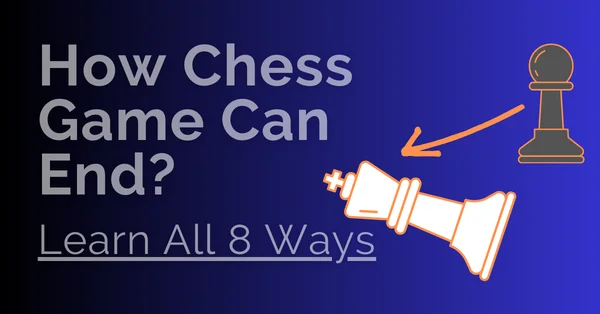
A player new to chess often asks the question how do you win at chess?
While the question “How to win at chess?” seems simple, its answer unfolds as we play the game.
To win in chess certain conditions need to be met. In the following sections, we discuss the conditions and how you can win or lose a chess game.
How can a chess game be won or lost?
King is Checkmated
One of the most common ways to win in chess is to checkmate the enemy king. This situation arises when you surround the enemy king and there is no way for the opponent to get out of this position.
Let’s take a look at a few examples
Position 1
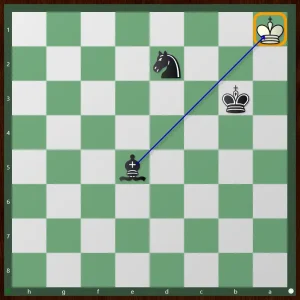
In this position, the White king is under attack (check) by the Bishop and has no legal move to parry the check. The King cannot move to the adjacent squares as well because the Black Knight and King control these squares.
As it’s checkmate, the black player wins the game.
Position 2
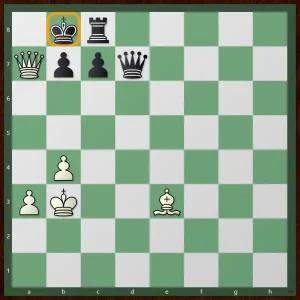
In this position the White Queen is attacking the Black King, therefore it is in check. However, the king cannot move out of the check because of the pawns and Rook. The player cannot capture the attacking White Queen as well. Therefore, Black loses the game. White gets a win in this chess game.
Flag falls
The clock is also a part of the game. As crucial as the moves are to the game the clock is also important. As time controls have reduced over time the quality of the moves is dependent on the time left.
So as time decreases a player scrambles to make moves. In many cases, a player runs out of his allotted time on the clock.
In this scenario, the rule says that no matter what the position is on the board, the player whose clock has run out loses the game.
This way to win in chess requires good time management skills apart from pure chess skills.
Note: There is an exception to this rule. If your clock has run out but the opponent has no legal way to deliver a checkmate then the game is a draw. More about draws in the later sections.
One of The Players Resigns
Once a player realizes that they can no longer salvage the game, the best thing to do is to accept imminent defeat. The rules allow a player to do this.
This is called resignation. A player can ‘resign’ themselves from the game. The player who resigns from the game loses. It is important to note that once you offer resignation to your opponent you cannot take it back.
As the level of the player increases this type of win in chess is common to see.
We have seen ways in which a player can win in chess. But like in a real battle, a truce is also possible to end the battle. When this happens in chess it is termed as a draw.
How can a chess game be drawn?
A draw can arise in a chess game in the following ways.
Stalemate
When the king is in check and has no legal squares to go to avoid the check. The King is also not able to avoid the check through other measures as well, the position is said to be a Stalemate.
The position on the board shows a stalemate.
It is Black to Move.
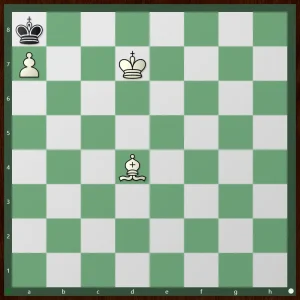
White has an extra piece and pawn in the position. If we consider material superiority for a win then white should win this position. However, in chess, this is not the case. The game ends in a draw.
Let’s take a look at another example.
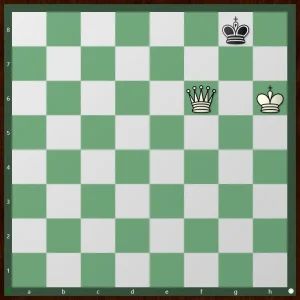
White has greater material in this position as well. Since White has the strongest single piece on the board, he should win this chess game. Yet this position is a stalemate.
The Black King’s route is inaccessible in all directions. The Queen controls the h8,g7,f7and f8 squares. And the King controls the h7 square.
Stalemates can be quite paradoxical for beginners. So it’s a good idea to take a look at as many examples as possible.
Insufficient material to checkmate
In the above example, we saw the game ends in a draw even when one player has an overwhelming material advantage. Another observation is that those pieces were also capable of delivering checkmate.
However in the instance where at the end if you have a piece that is unable to checkmate or have insufficient material to win then also the game will end in a draw.
A classic position is having a single minor piece left on the board. This lone minor piece cannot mate even with the help of the king.
In this position below, a checkmate is impossible as Black will just shuffle the king and there is no mating construction.
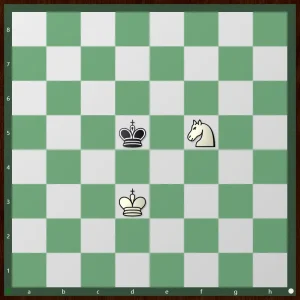
50 move-rule
Imagine a scenario where both players focus solely on defense, making maneuvers with no pawn captures or pawn advances.
When a game progresses like this then it can go on forever. The 50 Move rule is in place to combat this.
It states that if neither player captures a pawn or moves a pawn within the last 50 consecutive moves, either player can claim a draw.
Threefold Repetition
Sometimes, even with active play, certain positions might repeat themselves due to specific strategic considerations or forced play.
The Threefold Repetition Rule is in effect to help deal with such a scenario. It avoids perpetual checks or endlessly repeating sequences.
If the same position occurs three times, with the same player to move each time, and there are no other legal alternative moves that the player wishes to play, then the player whose turn it is can claim a draw.
This rule prevents players from exploiting specific tactical loops and ensures the game progresses beyond mere repetition.
Perpetual Check
The perpetual check arises when a player gives endlessly to the opponent’s king and the king has no way to dodge the checks. These back-and-forth checks are similar to threefold repetition but in the condition of perpetual check, it is not necessary to have the same position repeat.
A common scenario where this happens is when one side launches an attack against the enemy king to win in game but it proves to be insufficient to deliver a checkmate. So to recoup losses and avoid defeat the player can go for a perpetual check.
In the position below White decides to go for a forced perpetual with
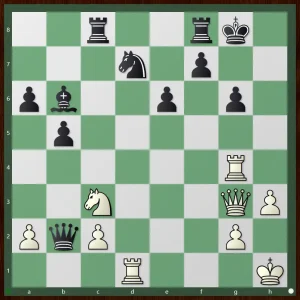
Rxg6+ fxg6
Qxg6+ Kh8
Qh6+ Kg8+
Qg6+ and there is no way for Black to avoid the checks
Draw offered and accepted
At any stage in the game, one player can offer a draw to his or her opponent. This offer is not binding on the other player. They can accept or reject the offer. The correct procedure to offer such a draw proposal is as follows:
While making your move you should say ‘I offer a draw’. It’s important to say this at the same time as you make your move.
You should not offer the draw proposal while it is your turn to move or when your opponent is thinking about their move.
If your opponent accepts the offer then the game ends in a draw. Otherwise, the game continues. There is also a limit to the number of draw offers a player can give.
You also might like Total Chess: More Ways to Draw as well as 5 Reasons Why You Shouldn’t Accept a Draw Offer.



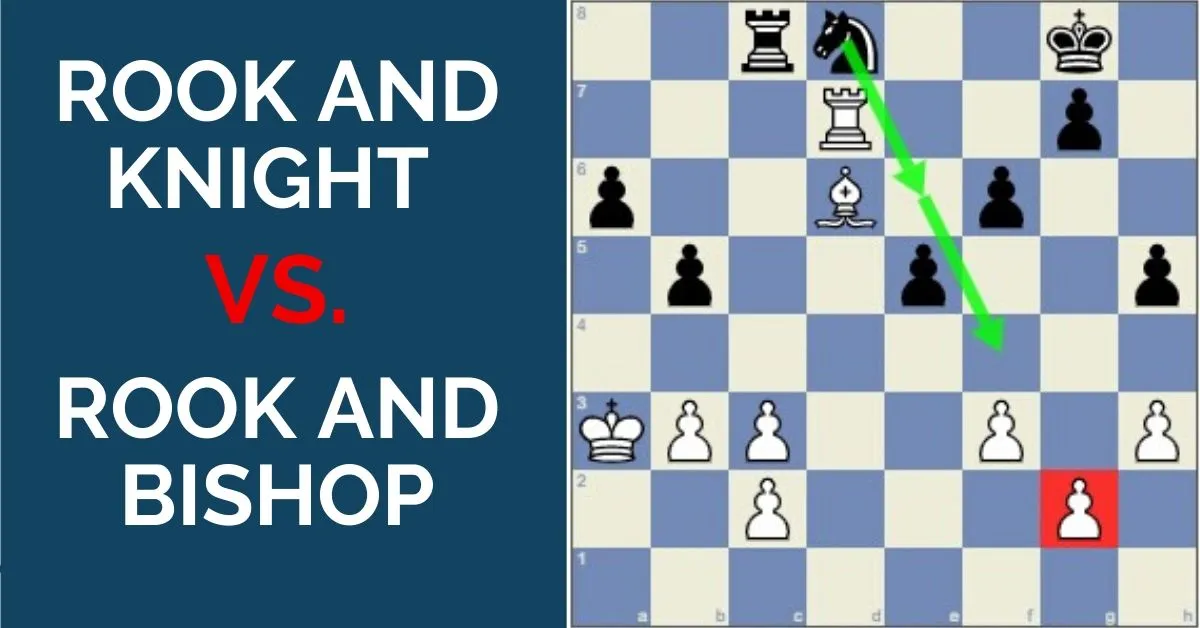

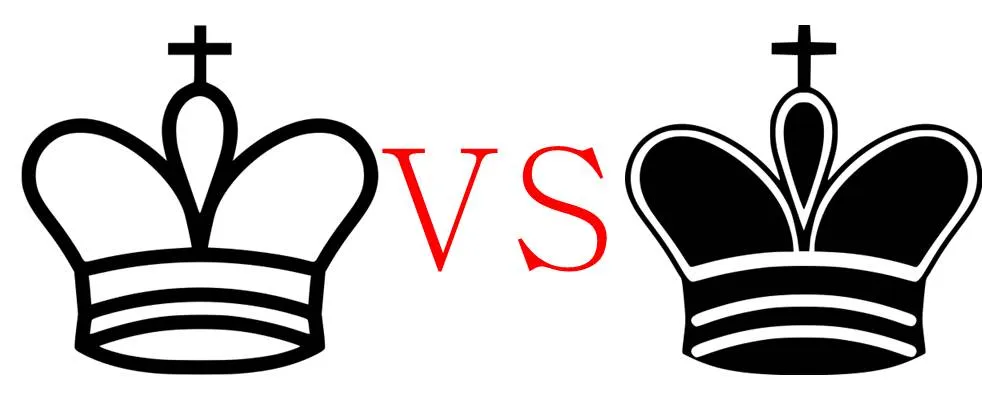




Comments: